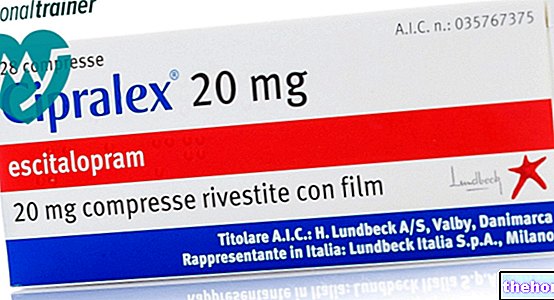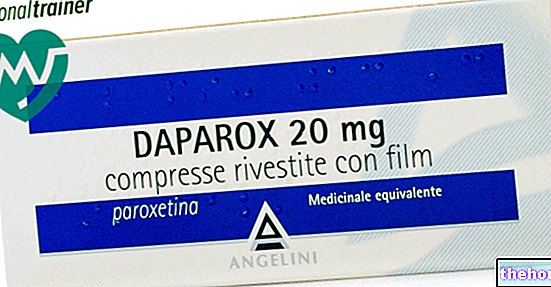Active ingredients: Macrogol (Macrogol 4000)
Laxipeg 9.7 g powder for oral solution
Laxipeg package inserts are available for pack sizes:- Laxipeg 9.7 g powder for oral solution
- Laxipeg 97% powder for oral solution
Indications Why is Laxipeg used? What is it for?
Laxipeg contains the active substance macrogol 4000 which belongs to a group of medicines called osmotic laxatives which retain water in the intestine.
This medicine is indicated for the short-term treatment of occasional constipation.
Talk to your doctor if you don't feel better or if you feel worse after 7 days.
Contraindications When Laxipeg should not be used
Do not take Laxipeg
- if you are allergic to macrogol 4000 or any of the other ingredients of this medicine (listed in section 6);
- if you have acute abdominal pain of unknown origin, nausea or vomiting;
- if you have "accentuation or reduction of bowel movements" (peristalsis) or rectal bleeding;
- if you suffer from intestinal blockage (intestinal obstruction, symptomatic stricture, paralytic ileus);
- if you suffer from or are at risk of a perforation of the digestive tract;
- if you have severe inflammatory bowel disease (ulcerative colitis, Crohn's disease) or toxic megacolon;
- if you are severely dehydrated.
Precautions for use What you need to know before taking Laxipeg
Talk to your doctor or pharmacist before taking Laxipeg.
The treatment of chronic or recurrent constipation always requires the intervention of the doctor for the diagnosis, the prescription of medicines and the surveillance during the course of therapy.
Consult your doctor when the need for the laxative derives from a sudden change in previous bowel habits (frequency and characteristics of bowel movements) that has lasted for more than two weeks or when the use of the laxative fails to produce effects.
Consult your doctor before using this medicine especially if you are elderly or in poor health.
The treatment of constipation with any medicine is only an adjunct to a healthy lifestyle and proper nutrition, for example:
- increase in the intake of liquids and vegetable fibers;
- appropriate physical activity and restoration of intestinal motility.
The abuse of laxatives (frequent or prolonged use or with excessive doses) can cause persistent diarrhea with consequent loss of water, mineral salts (especially potassium) and other essential nutritional factors.
In severe cases, dehydration or potassium deficiency (hypokalaemia) may develop, which can lead to heart or neuromuscular disorders, especially if you are taking heart medicines (cardiac glycosides), medicines that increase urine production (at the same time). diuretics) or medicines for inflammation (corticosteroids).
Take particular care during treatment with Laxipeg if you are subject to imbalances in the levels of salts in your blood (electrolyte imbalances) that are easily found if you are elderly or if you have problems with your kidneys (kidney failure), liver (liver failure) or heart ( heart failure). In these cases, you must regularly check the levels of salts in your blood.
The abuse of laxatives, especially contact laxatives (stimulant laxatives), can cause addiction (and, therefore, the possible need to gradually increase the dosage), chronic constipation and loss of normal intestinal functions (intestinal atony).
Very rare cases of hypersensitivity reactions (rash, urticaria, edema) and exceptional cases of anaphylactic shock with macrogol-containing medicinal products have been reported. Laxipeg, containing no sugar or polyol, can be taken by diabetic patients or on a galactose-free regimen.
Children
In children, the medicine can only be used after consulting your doctor.
Interactions Which drugs or foods can modify the effect of Laxipeg
Tell your doctor or pharmacist if you are taking, have recently taken or might take any other medicines.
Do not ingest laxatives and other medicines at the same time: after taking a medicine, leave an interval of at least two hours before taking the laxative.
Laxipeg with food and drink
Do not take Laxipeg together with licorice.
The use of licorice increases the risk of potassium deficiency (hypokalemia).
Warnings It is important to know that:
Pregnancy and breastfeeding
If you are pregnant or breast-feeding, think you may be pregnant or are planning to have a baby, ask your doctor or pharmacist for advice before taking this medicine. Laxipeg should be used during pregnancy and lactation only in case of need, under the direct supervision of the doctor, after having evaluated with him the relationship between the expected benefit for the mother and the possible risk for the fetus or infant.
Driving and using machines
No studies on the ability to drive and use machines have been performed.
Dose, Method and Time of Administration How to use Laxipeg: Posology
Always take this medicine exactly as described in this leaflet or as directed by your doctor or pharmacist. If in doubt, consult your doctor or pharmacist.
The recommended doses are:
Do not exceed the maximum daily dosage of 20 g of macrogol.
The daily dose can be taken between meals, preferably in the morning, in a single dose (1 or 2 sachets), or divided into two fractions.
Dissolve the contents of one sachet in at least 125 ml (equal to one glass) of water. Do not add any other ingredients.
Drink the entire amount fairly quickly (within a few minutes) and avoid sipping it for a long time.
The indicated dose should be adjusted according to individual response and may range from 1 sachet every other day (especially in children) up to 2 sachets per day.
The correct dose is the minimum sufficient to produce easy evacuation of soft stools.
Use the minimum recommended doses initially.
When necessary, the dose can then be increased, but without ever exceeding the maximum indicated.
The effect occurs 24-48 hours after administration. Note that laxatives should be used as infrequently as possible and for no more than seven days.
The use for longer periods of time requires a doctor's prescription after adequate evaluation of the individual case. In children, treatment should not exceed three months.
A diet rich in liquids favors the effect of the medicine. The regularization of intestinal motility induced by the treatment must be maintained with a healthy lifestyle and proper nutrition.
Overdose What to do if you have taken too much Laxipeg
In case of accidental ingestion / intake of an excessive dose of Laxipeg, notify your doctor immediately or go to the nearest hospital.
Excessive doses of Laxipeg can cause:
- abdominal pain;
- vomiting or diarrhea. Excessive fluid loss caused by diarrhea or vomiting may require correction of the imbalance in the levels of salts in the blood (electrolyte imbalance);
- cases of ingestion of the preparation in the trachea during swallowing (aspiration) when administering high volumes of macrogol solution and electrolytes with a nasogastric tube.
If you have any further questions on the use of this medicine, ask your doctor or pharmacist.
Side Effects What are the side effects of Laxipeg
Like all medicines, this medicine can cause side effects, although not everybody gets them.
The following side effects may occur in children:
Common (may affect up to 1 in 10 patients)
- abdominal pain
- abdominal distension
- nausea
- diarrhea (diarrhea can cause perianal pain)
Uncommon (may affect up to 1 in 100 patients)
- He retched
- rectal irritation
Very rare (may affect up to 1 in 10,000 patients)
- hypersensitivity
Frequency not known (frequency cannot be estimated from the available data)
- severe rapidly evolving allergic reaction (anaphylactic shock)
- swelling of tissues in general (angioedema)
- skin irritation (hives, rashes), itching.
In adults, the following side effects may occur:
Common (may affect up to 1 in 10 patients)
- abdominal pain and / or distension
- diarrhea
- nausea
Uncommon (may affect up to 1 in 100 patients)
- He retched
- urgent evacuation
- fecal incontinence
- rectal irritation
Very rare (may affect up to 1 in 10,000 patients)
- hypersensitivity reactions which may occur with itching, rash, hives, swelling of the face (edema) and tissues in general (angioedema), difficulty in breathing (dyspnoea), severe rapidly evolving allergic reaction (anaphylactic shock).
Frequency not known (frequency cannot be estimated from the available data)
- electrolyte imbalance (sodium deficiency, potassium deficiency) and / or dehydration particularly in the elderly
- redness of the skin (erythema).
Reporting of side effects
If you get any side effects, talk to your doctor or pharmacist. This includes any possible side effects not listed in this leaflet. You can also report side effects directly via the national reporting system at www.agenziafarmaco.gov.it/it/responsabili. By reporting side effects you can help provide more information on the safety of this medicine.
Expiry and Retention
Keep this medicine out of the sight and reach of children.
Do not use this medicine after the expiry date which is stated on the package after "EXP". The expiry date refers to the last day of that month. The expiry date refers to the unopened product, correctly stored.
Keep Laxipeg in the original package to protect the product from moisture.
Do not throw any medicines via wastewater or household waste. Ask your pharmacist how to throw away medicines you no longer use. This will help protect the environment.
Deadline "> Other information
What Laxipeg contains
The active ingredient is macrogol 4000. Each sachet contains 9.736 g of macrogol 4000.
The other ingredients are: acesulfame potassium, banana flavor.
What Laxipeg looks like and contents of the pack
Laxipeg comes in the form of a powder for oral solution.
The contents of the pack are 10 or 20 sachets.
Source Package Leaflet: AIFA (Italian Medicines Agency). Content published in January 2016. The information present may not be up-to-date.
To have access to the most up-to-date version, it is advisable to access the AIFA (Italian Medicines Agency) website. Disclaimer and useful information.
01.0 NAME OF THE MEDICINAL PRODUCT -
LAXIPEG 9.7 G POWDER FOR ORAL SOLUTION
02.0 QUALITATIVE AND QUANTITATIVE COMPOSITION -
Laxipeg 9.7 g powder for oral solution
One sachet contains:
Active ingredient: macrogol 4000 g 9.736.
For excipients see 6.1.
03.0 PHARMACEUTICAL FORM -
Powder for oral solution.
04.0 CLINICAL INFORMATION -
04.1 Therapeutic indications -
Short-term treatment of occasional constipation.
04.2 Posology and method of administration -
Adults and children over 8 years of age and weighing over 20 kg.
Oral use.
1 to 2 sachets per day, preferably taken as a single dose in the morning. Each sachet should be dissolved in a glass of water before intake.
The daily dose should be adjusted according to the clinical effect obtained and can vary from one sachet every other day (especially in children) up to 2 sachets per day. Do not exceed the maximum daily dosage of 20 g of macrogol.
The correct dose is the minimum sufficient to produce easy evacuation of soft stools.
It is advisable to initially use the minimum doses provided.
When necessary, the dose can then be increased, but without ever exceeding the maximum indicated.
The daily dose can be taken in one or two fractions, away from meals.
The effect occurs 24-48 hours after administration. In this case, continue the treatment bearing in mind, however, that laxatives should be used as infrequently as possible and for no more than seven days.
The use for longer periods of time requires a doctor's prescription after adequate evaluation of the individual case. In children, in the absence of clinical data on administration periods longer than three months, treatment should not exceed three months.
Dissolve the contents of one sachet in at least 125 ml (equal to a glass) of water.
Do not add any other ingredients.
It is best to drink the entire amount fairly quickly (within a few minutes) and avoid sipping it for a long time.
A diet rich in liquids favors the effect of the medicine. The regularization of intestinal motility induced by the treatment must be maintained with a healthy lifestyle and proper nutrition.
04.3 Contraindications -
• Hypersensitivity to Macrogol (Polyethylene glycol) or to any of the excipients.
• Severe inflammatory bowel disease (such as ulcerative colitis, Crohn's disease) or toxic megacolon
• Perforation or risk of perforation of the digestive tract.
• Paralytic ileus or suspected intestinal obstruction or symptomatic stricture.
• Acute abdominal pain of unknown origin, nausea or vomiting, marked accentuation or reduction of peristalsis, rectal bleeding.
The presence of one or more of these symptoms or signs requires an adequate diagnostic investigation by the doctor in order to exclude one of the pathological conditions that contraindicate the use of laxatives.
• Severe state of dehydration.
04.4 Special warnings and appropriate precautions for use -
Warnings
The treatment of constipation with any medicine is only an adjunct to a healthy lifestyle and proper nutrition, for example:
• increase in the intake of liquids and vegetable fibers
• appropriate physical activity and restoration of intestinal motility
The abuse of laxatives (frequent or prolonged use or with excessive doses) can cause persistent diarrhea with consequent loss of water, mineral salts (especially potassium) and other essential nutritional factors. In these cases, caution is recommended in patients prone to developing imbalances electrolytes (eg in the elderly, in patients with hepatic insufficiency, renal insufficiency, heart failure). It is advisable in these cases to periodically check the serum electrolyte levels.
In severe cases, the onset of dehydration or hypokalemia is possible, which can cause cardiac or neuromuscular dysfunction, especially in the case of simultaneous treatment with cardiac glycosides, diuretics or corticosteroids.
The abuse of laxatives, especially contact laxatives (stimulant laxatives), can cause addiction (and, therefore, the possible need to gradually increase the dosage), chronic constipation and loss of normal intestinal functions (intestinal atony).
Important information about some of the excipients
LAXIPEG, containing no sugar or polyol, can be taken by diabetic patients or undergoing a galactose-free diet.
Precautions for use
Very rare cases of hypersensitivity reactions (rash, urticaria, edema) and exceptional cases of anaphylactic shock with macrogol-containing medicinal products have been reported.
In children, the medicine can only be used after consulting your doctor.
The treatment of chronic or recurrent constipation always requires the intervention of the physician for the diagnosis, the prescription of the drugs and the surveillance during the therapy.
Consult your doctor when the need for the laxative derives from a sudden change in previous bowel habits (frequency and characteristics of bowel movements) lasting more than two weeks or when the use of the laxative fails to produce effects.
It is also advisable for elderly people or those in poor health to consult their doctor before using the medicine.
04.5 Interactions with other medicinal products and other forms of interaction -
Laxatives can reduce the time spent in the intestine and therefore the absorption of other drugs administered simultaneously orally.
Therefore, avoid ingesting laxatives and other drugs at the same time: after taking a medicine, leave an interval of at least two hours before taking the laxative.
The use of licorice increases the risk of hypokalemia.
04.6 Pregnancy and breastfeeding -
There are no adequate and well-controlled studies on the use of the drug in pregnancy or lactation. Therefore, the medicine should only be used in case of need, under the direct supervision of the doctor, after evaluating the expected benefit to the mother in relation to the possible risk to the fetus or infant.
04.7 Effects on ability to drive and use machines -
No studies on the ability to drive and use machines have been performed.
04.8 Undesirable effects -
Adverse drug reactions are listed by frequency using the following frequency categories: very common (≥ 1/10); common (≥ 1/100,
Adults
The undesirable effects listed in the following table have been reported in clinical trials (600 adult patients) and from post-marketing data. The adverse reactions reported are generally of mild intensity and transient and have mainly involved the gastrointestinal system:
Pediatric population
The undesirable effects listed in the following table have been reported in clinical trials involving 147 children aged 6 months to 15 years and from post-marketing data. Generally, the adverse reactions reported are mild in intensity and transient and have mainly affected the gastrointestinal system:
* Diarrhea can cause perianal pain
Reporting of suspected adverse reactions
Reporting of suspected adverse reactions occurring after authorization of the medicinal product is important as it allows continuous monitoring of the benefit / risk balance of the medicinal product. Healthcare professionals are asked to report any suspected adverse reactions via the national reporting system. "address www.agenziafarmaco.gov.it/it/responsabili.
04.9 Overdose -
Overdose causes diarrhea which disappears with temporary interruption of treatment or dose reduction.
Excessive fluid loss caused by diarrhea or vomiting may require correction of the electrolyte imbalance.
Excessive doses can cause abdominal pain and vomiting.
Cases of aspiration have been reported when administering large volumes of polyethylene glycol and electrolytes with a nasogastric tube. Neurologically impaired children suffering from oromotor dysfunction are particularly at risk of aspiration.
See also the information in the section "Special warnings and precautions for use" regarding the abuse of laxatives.
05.0 PHARMACOLOGICAL PROPERTIES -
05.1 "Pharmacodynamic properties -
Pharmacotherapeutic group: laxative with osmotic action.
ATC code A06AD15.
Mechanism of action: the high molecular weight macrogol is a long polymer on which water molecules are adsorbed by hydrogen bonds. The oral administration of macrogol causes an increase in the volume of intestinal fluids, which is the basis of the laxative mechanism of the product.
Pharmacodynamic effects: macrogol counteracts dehydration in the intestine by increasing the water content in the lumen, induces an increase in fecal mass and makes the stool softer. The laxative effect of macrogol is not subject to tolerance phenomena, as demonstrated by the persistence of the " laxative effect without any dose increase or even allowing for progressive dose reduction Macrogol has been shown not to cause changes in the water-electrolyte balance even with prolonged use.
Histological studies on the intestinal mucosa in patients with inflammatory bowel diseases have shown a better preservation of the surface epithelium and goblet cells after the use of macrogol 4000 based solutions compared to traditional laxatives.
Clinical efficacy: Several clinical studies conducted in both adults and children have shown that macrogol alone is effective in increasing the frequency of bowel movements, decreasing stool consistency and facilitating bowel movements.
05.2 "Pharmacokinetic properties -
Pharmacokinetic data confirm the absence of intestinal absorption and metabolism of macrogol after oral administration.
05.3 Preclinical safety data -
Preclinical studies have shown that macrogol 4000 has no significant toxicity on the digestive mucosa and at the systemic level. No teratogenic, mutagenic or carcinogenic effects were observed with high molecular weight macrogols.
06.0 PHARMACEUTICAL INFORMATION -
06.1 Excipients -
Acesulfame potassium, banana flavor.
06.2 Incompatibility "-
None known.
06.3 Period of validity "-
3 years.
06.4 Special precautions for storage -
Store in the original packaging to protect the product from moisture.
06.5 Nature of the immediate packaging and contents of the package -
Sachets: Cardboard boxes containing heat-sealed laminated sachets (paper / aluminum / polyethylene).
06.6 Instructions for use and handling -
No particular.
07.0 HOLDER OF THE "MARKETING AUTHORIZATION" -
Zambon Italia s.r.l. - Via Lillo del Duca 10 - 20091 Bresso (MI).
08.0 MARKETING AUTHORIZATION NUMBER -
Laxipeg 9.7g powder for oral solution - 10 sachets AIC n.035953013
Laxipeg 9.7g powder for oral solution - 20 sachets AIC n.035953025
09.0 DATE OF FIRST AUTHORIZATION OR RENEWAL OF THE AUTHORIZATION -
July 2010.
10.0 DATE OF REVISION OF THE TEXT -
December 18, 2015




























